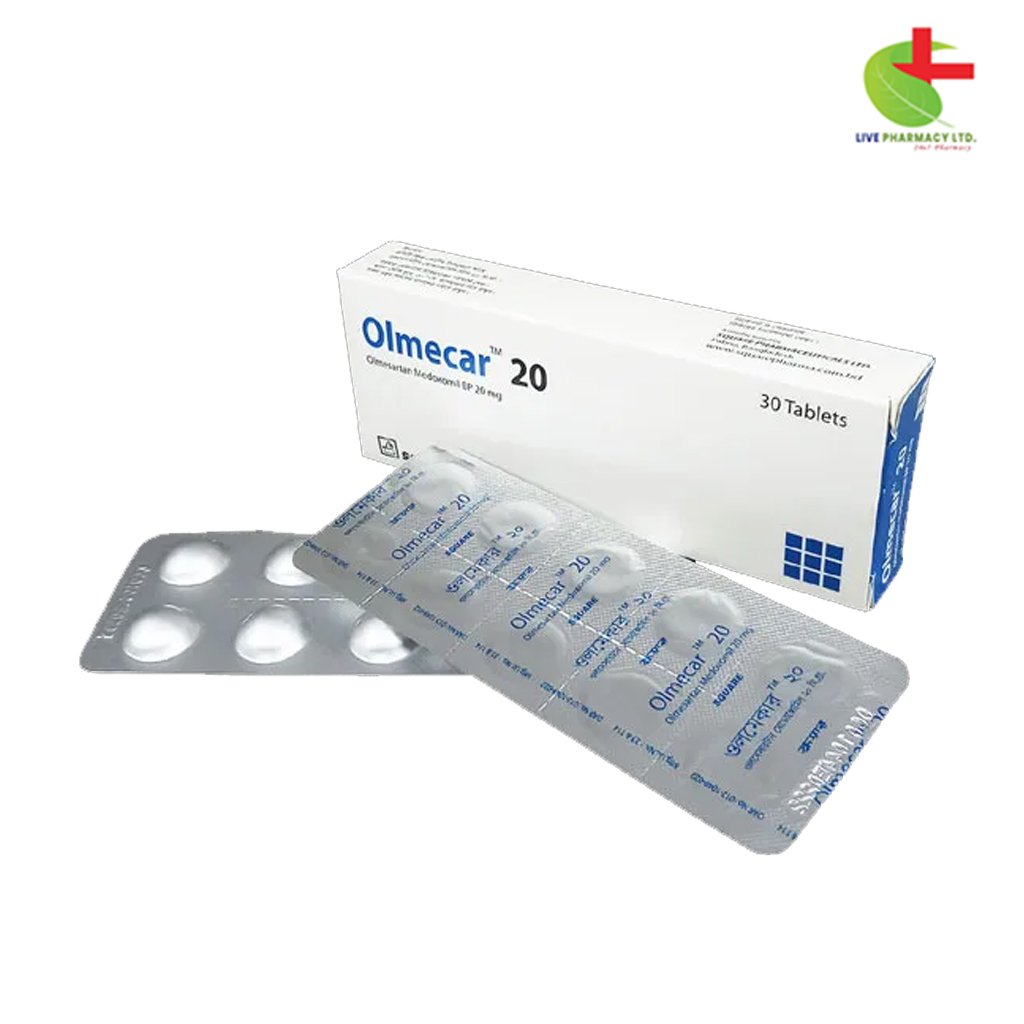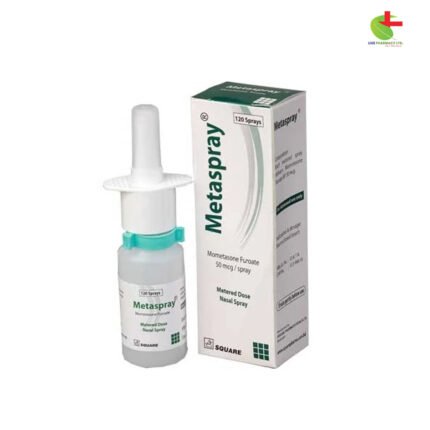Olmecar 20
100.00৳ Strip
- Olmecar: a potent antihypertensive medication
- Selectively blocks angiotensin II receptor in vascular smooth muscle
- Reduces vasoconstriction without affecting bradykinin response
- Individualized dosing starting at 20 mg once daily
- Extensively evaluated for safety and well-tolerated
- Reliable blood pressure control with minimal side effects
 Brand
Brand
|
Square Pharmaceuticals PLC |
|---|---|
 Generics
Generics
|
Olmesartan Medoxomil |
Indications
Olmecar is prescribed to manage hypertension, either alone or alongside other antihypertensive medications.
Pharmacology
Angiotensin II, a key player in the renin-angiotensin system, is responsible for various effects including vasoconstriction, aldosterone release, and cardiac stimulation. Olmesartan counteracts these effects by specifically blocking the AT 1 receptor in vascular smooth muscle, thereby reducing vasoconstriction. Unlike ACE inhibitors, Olmesartan does not affect bradykinin response.
Dosage & Administration
Dosage should be tailored to each individual. Typically, Olmesartan starts at 20 mg once daily for non-volume-contracted patients. If further blood pressure reduction is needed after two weeks, the dosage may be increased to 40 mg. There seems to be no additional benefit in doses beyond 40 mg, and twice-daily dosing doesn’t offer advantages over once-daily dosing.
No initial dose adjustment is required for elderly patients or those with moderate to severe renal or hepatic impairment. However, caution is advised in patients with depleted intravascular volume, such as those on diuretic therapy.
Pediatric use: Safety and efficacy in children have not been established.
Interactions
No significant drug interactions were observed when Olmecar was co-administered with digoxin or warfarin. Olmesartan’s bioavailability remains unaffected by antacids. It doesn’t interfere with the cytochrome P450 system, minimizing the risk of interactions with drugs metabolized by or affecting these enzymes.
NSAIDs, especially in elderly, volume-depleted, or renal-compromised patients, may lead to renal function deterioration when co-administered with Olmesartan. Periodic renal function monitoring is recommended in such cases.
Contraindications
Olmecar should not be used in patients hypersensitive to any of its components.
Side Effects
In clinical trials, Olmecar was well-tolerated, with adverse reactions similar to placebo. Dizziness was the most commonly reported side effect. Other adverse reactions occurred at similar rates to placebo and included back pain, diarrhea, headache, and hyperglycemia.
Pregnancy & Lactation
Discontinue Olmesartan as soon as pregnancy is detected, especially during the second and third trimesters due to potential harm to the fetus. Its excretion in human milk is unknown, but caution is advised during breastfeeding.
Precautions & Warnings
Renal function changes may occur, particularly in patients whose renal function relies on the renin-angiotensin-aldosterone system. Close monitoring is recommended, especially in patients with severe congestive heart failure.
Overdose Effects
Overdose experiences with Olmecar are limited. Symptoms may include hypotension and tachycardia. Management involves supportive care and monitoring cardiovascular function.
Therapeutic Class
Angiotensin-II receptor blocker
Storage Conditions
Store below 30ºC in a cool, dry place, away from light and moisture. Keep out of reach of children.
Chemical Structure
Molecular Formula: C29H30N6O6
Chemical Structure: Olmesartan Medoxomil structure
Common Questions about Olmecar 20 mg Tablet
FAQs about Olmecar include its uses, duration for improvement, dosage frequency, administration instructions, storage, and disposal recommendations. Additionally, quick tips are provided for optimal usage, including timing, precautions, and potential side effects.













Reviews
There are no reviews yet.